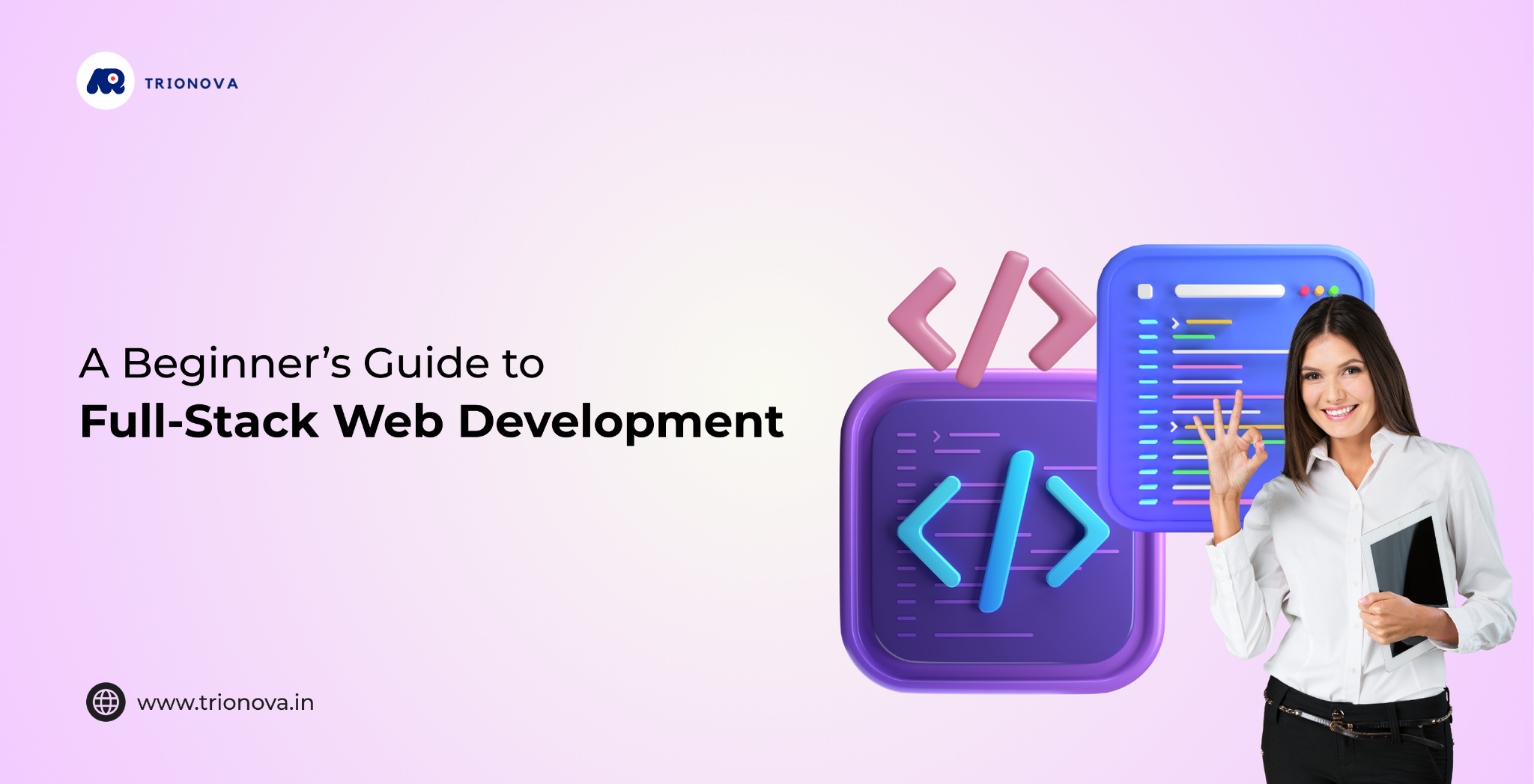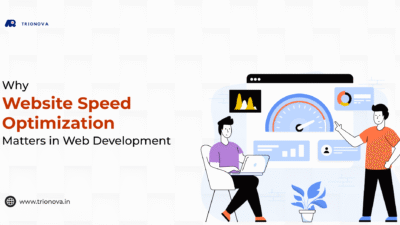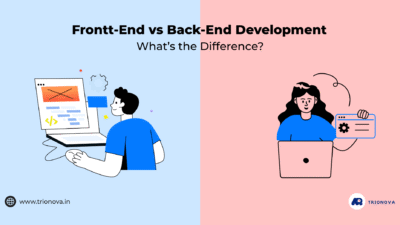In today’s digital-first world, every business — from startups to enterprises — needs a robust, scalable, and user-friendly website or application. But building such solutions requires more than just coding the front end or managing databases at the back end. It demands full-stack web development — a holistic approach where a developer or team works across both the front end (what users see) and the back end (what powers it behind the scenes).
At Trionova Technology, a leading website development company in Chennai, we specialize in helping businesses harness the power of full-stack development. Whether you’re a beginner trying to understand what full-stack means, or a business deciding on hiring a team, this guide will walk you through everything you need to know in 2025.
What is Full-Stack Web Development?
Full-stack web development involves working on both the client side (front end) and the server side (back end) of a website or application. Instead of dividing work between two separate teams, full-stack developers handle the entire lifecycle of web development, from designing interfaces to managing databases and servers.
In simpler words:
- Front End = What you see on a website (UI, design, buttons, forms, animations).
- Back End = The logic, data storage, servers, and security that make everything work.
- Full Stack = Both combined, enabling a single team (or developer) to build complete applications.
Front-End Development Basics
The front end is the part of the website users directly interact with. It needs to be attractive, responsive, and user-friendly.
Key Front-End Technologies in 2025
- HTML5 – The backbone for structuring content.
- CSS3 (and frameworks like TailwindCSS) – For styling, layouts, and responsive designs.
- JavaScript – The core language for adding interactivity.
- React.js, Angular, Vue.js, Svelte – Popular frameworks for building dynamic, modern interfaces.
Why Front End Matters
- A slow or poorly designed front end can increase bounce rates.
- Great UI/UX enhances customer engagement and builds trust.
- With mobile-first design being a priority in 2025, front-end developers ensure websites work seamlessly across devices.
Back-End Development Basics
The back end is the engine behind your website. It manages requests, processes logic, and communicates with databases.
Key Back-End Technologies in 2025
- Node.js – Perfect for real-time applications and full-stack JavaScript projects.
- Django (Python) – Highly secure and scalable for enterprise solutions.
- Laravel (PHP) – Excellent for affordable, small-to-medium projects.
- Spring Boot (Java) – Ideal for mission-critical enterprise-grade apps.
- Databases – MySQL, PostgreSQL, MongoDB, Firebase for data storage and management.
Why Back End Matters
- Ensures security of user data.
- Provides scalability to handle thousands (or millions) of users.
- Powers integrations with payment gateways, APIs, and third-party services.
What Does a Full-Stack Developer Do?
A full-stack developer combines the skills of both front-end and back-end developers. By 2025, full-stack developers are some of the most in-demand professionals worldwide because businesses value their ability to handle end-to-end development.
Key Full-Stack Developer Skills in 2025
- Programming Languages: JavaScript, Python, PHP, Java, TypeScript.
- Front-End Mastery: React, Angular, Vue.js, or Svelte.
- Back-End Frameworks: Node.js, Django, Laravel, or Spring Boot.
- Database Management: SQL (MySQL, PostgreSQL) and NoSQL (MongoDB).
- Version Control: Git/GitHub for collaboration.
- DevOps Basics: Understanding CI/CD pipelines and cloud hosting (AWS, Azure, GCP).
- Soft Skills: Problem-solving, adaptability, and teamwork.
👉 In 2025, many full-stack developers also integrate AI tools to optimize workflows, automate testing, and deliver faster results.
Benefits of Full-Stack Web Development
- Cost-Effective – Instead of hiring separate front-end and back-end teams, one full-stack team can handle both.
- Faster Development – Reduced communication gaps and faster project delivery.
- Better Problem Solving – Full-stack developers see the “big picture” and can troubleshoot across the stack.
- Scalable Solutions – Build websites that grow with your business.
- Flexibility – Perfect for startups and enterprises alike, adapting to project requirements quickly.
Cost of Full-Stack Web Development in 2025
The cost of building a full-stack website or application depends on complexity, features, technology stack, and developer location.
Cost Comparison by Project Type
| Project Type | India (Trionova, Chennai) | Canada/US | Savings |
| Basic Business Website | ₹3–5 lakhs (CAD $6k–9k) | CAD $15k–25k | 60–70% |
| E-Commerce Website | ₹7–12 lakhs (CAD $12k–20k) | CAD $30k–50k | 55–65% |
| SaaS/Web Application | ₹12–20 lakhs (CAD $20k–35k) | CAD $50k–90k | 50–60% |
| Enterprise Portal (Banking/ERP) | ₹20–40 lakhs (CAD $35k–70k) | CAD $100k+ | 60%+ |
👉 By working with Trionova Technology in Chennai, businesses save 50–70% in costs while still getting world-class quality.
How to Choose the Right Team or Developer
When choosing a full-stack web development team, consider these factors:
- Experience with Relevant Frameworks – Check if they’ve built projects similar to yours.
- Portfolio & Case Studies – Review previous work for design quality and performance.
- Scalability – Can they handle growth, future integrations, and advanced features?
- Cost Transparency – Ensure they provide a clear breakdown of development, maintenance, and scaling costs.
- Post-Launch Support – Continuous updates and security patches are critical in 2025.
At Trionova Technology, we follow a consultative approach — understanding your business goals, suggesting the right stack, and building scalable websites that deliver ROI.
Why Choose Trionova Technology?
As the No.1 Website Development Company in Chennai, Trionova is trusted by businesses across India, Canada, and globally. Here’s why:
- Certified Full-Stack Experts – Our team is certified in React, Angular, Vue, Node.js, Django, Laravel, and more.
- Cost Advantage – Our pricing in Chennai is 50–70% lower than Canadian/US firms without compromising quality.
- Domain Expertise – From healthcare and e-commerce to fintech and travel, we’ve built full-stack solutions across industries.
- Agile Development Process – Faster delivery, transparent updates, and iterative feedback.
- End-to-End Services – Strategy, UI/UX, development, deployment, and maintenance — everything under one roof.
- Future-Ready Solutions – Incorporating AI, automation, and security into every project.
Full-Stack in 2025: What’s Next?
The future of full-stack development is exciting. Trends shaping 2025 include:
- AI-Assisted Development – Developers using AI to write, test, and optimize code faster.
- Serverless Architecture – Reducing infrastructure costs.
- PWAs + Full Stack – Building cross-platform apps without separate iOS/Android development.
- Cloud-Native Development – Websites built directly for AWS, Azure, or Google Cloud.
- Cybersecurity First – Security frameworks baked into every project from day one.
Final Thoughts
For beginners, full-stack web development may sound complex, but in reality, it’s about bringing together the two critical parts of a website — front end and back end — into one seamless solution. For businesses, it means cost savings, faster delivery, and more control.
At Trionova Technology, we help you cut through the complexity and build future-ready websites and applications that align with your business goals. Whether you’re a startup in Chennai or an enterprise in Canada, our certified full-stack developers deliver affordable, scalable, and high-quality solutions.🚀 Ready to build your next full-stack project? Partner with Trionova Technology — your trusted website development company in Chennai.





